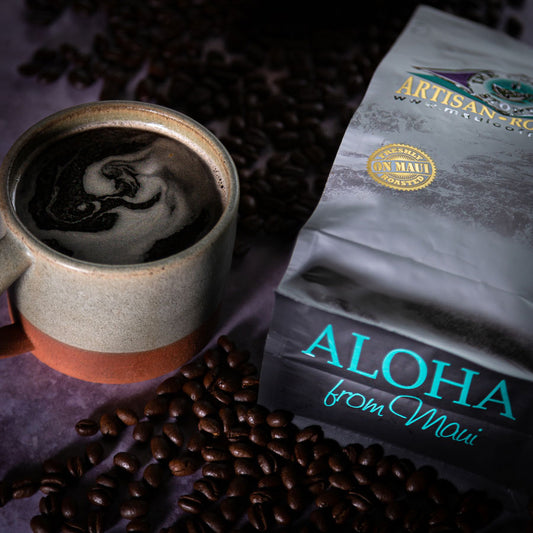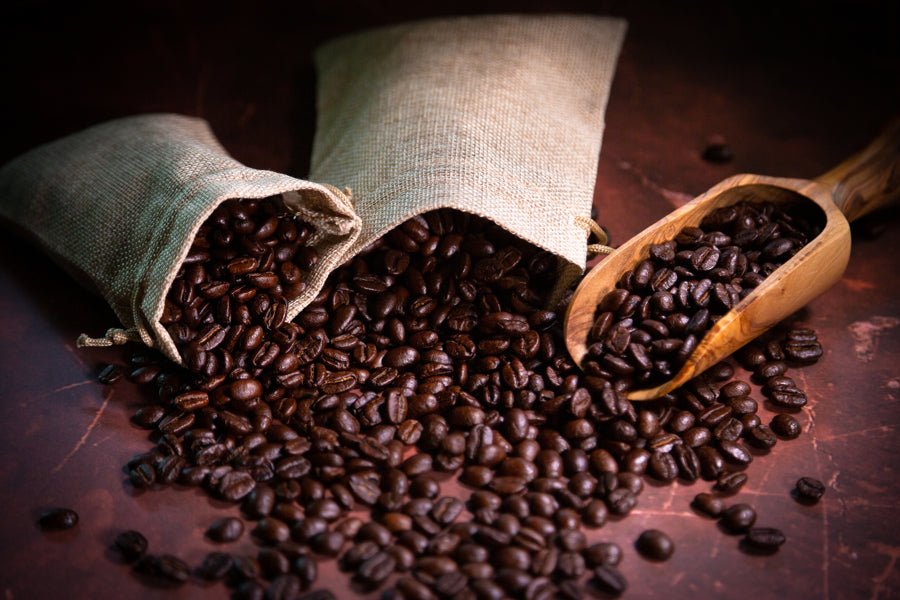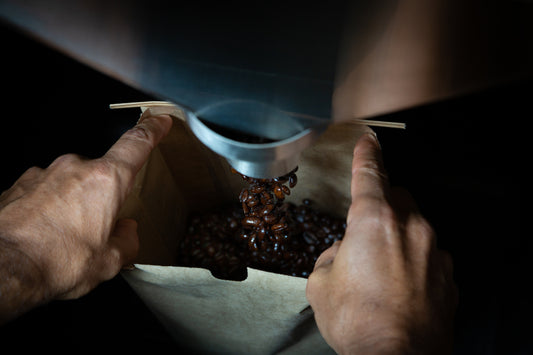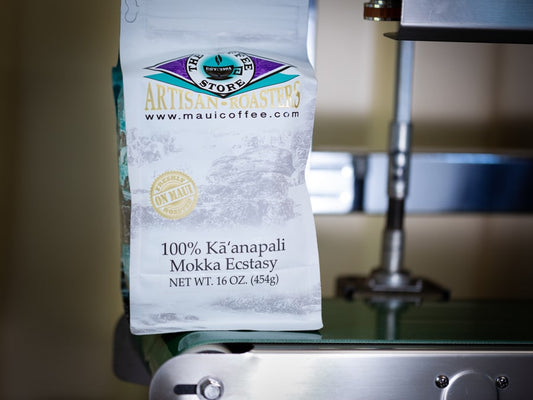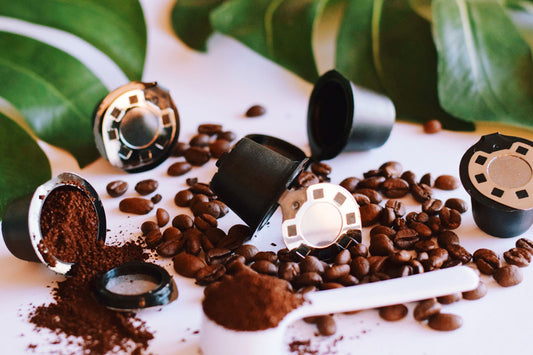Picture yourself strolling along a Hawaiian hillside. To the West is an unbroken view of the Pacific Ocean. To the East loom the volcanic peaks of Mauna Loa and Hualalai. The day is sunny and mild, until the brief-but-nourishing afternoon rain that the tropics so often enjoy.
Sounds nice, doesn’t it?
Well, the coffee plants think so, too. You’re in the Kona Coffee Belt, and there’s good reason why it tops the worldwide list of premier coffee growing regions.

The Land
The Kona Coffee Belt is small. It’s roughly 30 miles long and one mile wide. Running north-to-south, this strip of land hugs the western flank of Mauna Loa and Hualalai at an elevation range of 1,500’ - 3,500’ above the nearby Kona Coast. The volcanoes are quite young in geologic age, and the rich volcanic soil from their not-so-ancient eruptions is deep and well-drained. This makes it perfect for coffee plants, as does the abundance of sunlight from the panoramic western exposure.

The Weather
Down the hill in Kailua-Kona, the town and the beaches are dusty and sun-baked. But up in the Kona Coffee Belt, the temperature is almost always perfect. There are sunny mornings and mild nights and the evenings are cool with gentle rains. The days are bright and breezy. The worst thing you can say about it is that sometimes, when the ‘Kona Winds’ blow, fumes from the active Kilauea volcano to the southeast settle in. The volcanic fog – ‘vog’ as it’s known locally – can be irritating to people. Fortunately, the coffee trees don’t seem to mind.
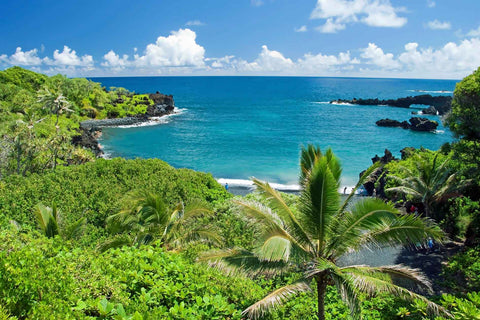
Kona Coffee Farms
The history of Kona Coffee is as rich as the coffee itself. Folks have been growing coffee in the Kona District of the Big Island of Hawaii since the early 1800’s. In the early days, coffee plantations opened just to close again after struggling with pests, labor issues and a dominant sugar industry. In 1892, Hermann Widemann introduced a Guatemalan arabica coffee varietal known as ‘Typica’ from which today’s ‘Kona Typica’ is a direct descendant. It grew beautifully in the region described above. (For something different and delicious, you can try this wonderful Kona Typica varietal, grown on Maui, too)
Over the decades to follow, small farmsteads growing Kona Coffee proliferated along the hillside. By the 1980’s, the local coffee industry had earned a worldwide following as ‘specialty coffee’ entered the consciousness of coffee connoisseurs across the globe.
Some of the earliest Kona Coffee farms are still in operation, run by descendants of the original owners. They still pick each ripe cherry by hand and still prune their coffee plants using traditional methods. Kona Typica is still the dominant coffee bean in production (though some farmers have branched out with delicious results!). In all, the farms in the region enjoy small-farm pride and quality-control, while benefiting from rich and well-developed regional traditions and coffee infrastructure. It’s the best of both worlds!

Kona Coffee Taste
Kona Coffee is outstanding in taste and aroma. The aroma is what hits you first, at once sweet and savory with intense nuttiness and complex fruity overtones. In the cup, Kona Coffee is smooth and medium-bodied with very low acidity and a buttery mouthfeel. The rich flavor finishes clean, although notes of cocoa, caramel and hazelnut can linger on. Don’t be surprised when you finish that first cup faster than you expected to!

Grades of Kona Coffee
The Hawaii Department of Agriculture grades all unroasted ‘green’ coffee grown in the state before it can be sold as authentic Hawaiian coffee. Hawaiian coffee is graded by bean size, moisture content and defect count with only the biggest, most uniform beans earning the top grades. Below is a list of the grades of Kona Coffee beans from highest to lowest. Click on the links to buy or to learn more:
-
100% Kona Prime

Kona Coffees from the Roaster’s Perspective
Roasters love Kona Coffee for all the same reasons coffee drinkers do. After all, roasters are coffee-lovers first-and-foremost. Kona Coffee does present certain roasting challenges, though. The Kona Typica coffee bean has an elongated shape with one very flat facet. This is especially true at the higher grades with larger beans. It looks beautiful, and it’s undeniably tasty, but it doesn’t tumble as freely in a roasting machine’s spinning drum as other coffees do. As a result, the flat facet can scorch against the metal surfaces of the drum. Here at The Coffee Store, we’ve learned that by reducing the batch size and starting our roasts a little slower, we can virtually eliminate scorching.
All coffees ‘crack’ during roasting. This is a phenomenon not unlike popcorn popping – as pressure builds inside the heating bean and chemical changes alter its structure, the bean emits a cracking noise. Kona Coffee has an especially-strong crack compared to other coffees. For the admittedly-vain roaster, this is very gratifying, as the coffee offers up a round of applause at the end of the roast. Dark roasts, like our 100% Kona Dark, really bring the house down!

Kona Peaberry Beans
Most coffee beans are twins, growing two per coffee cherry. The way they nestle together inside the fruit explains the flat facet that most coffee beans have. Some cherries, however, contain only one bean. This is relatively rare, occurring in 1-2% of coffee cherries. The resulting singletons are oblong and round, known as ‘peaberries’. Using various mechanisms like sized screens and vibrating, sloped tables, coffee mills separate out this peaberry coffee and sell it at a premium.
Some folks swear that, with less competition for nutrients inside the cherry, Kona peaberry beans are more complex and flavorful. As roasters, we love peaberry coffees for the way they tumble freely inside the roasting drum. They have no edges or flat facets to scorch. Plus, they are measurably denser than their ‘flatbean’ counterparts, allowing them to hold heat perfectly during roasting. All Kona Coffee lovers should try 100% Kona Peaberry!

Kona Coffee Blends
Since 1991, blends labeled ‘Kona Blend’ are required by Hawaii law to contain a minimum of 10% Kona Coffee by weight. This has caused problems for consumers and producers alike. Too many coffee drinkers have been hoodwinked into buying coffee that’s 90% non-Kona Coffee for Kona Coffee prices. This is terrible for the farmers, too, since it damages the region’s well-deserved reputation for exceptional coffee.
There is draft legislation afoot as of this writing (February 2022) that is intended to address this issue. We support some of the proposals, and we find others to be misguided. I expect we’ll post more about it in the future. In the meantime, here’s what consumers should know:
Blends are a valid way to enhance flavor, temper pricing and provide variety. While 10% is a laughably-low proportion that shouldn’t be taken seriously, well-crafted blends with as little as 25% Kona Coffee can be wonderful. Consumers can benefit from more-affordable options that still deliver some of the magic that makes Kona Coffee so wonderful. And producers can sell Kona Coffee to customers who might be priced out of 100% Kona options. When buying Kona blends, make sure they are clearly labeled with the percentage of Kona Coffee used. For example, here at The Coffee Store, we offer:
Don’t fall for misleading packaging!

In conclusion…
Bordeaux wine, Tahitian vanilla, Kona Coffee… certain regions are such perfect growing environments that they become synonymous with their product. Kona Coffee has an iconic status, and it has earned that status through dedicated Kona Coffee farmers, longstanding quality and millions upon millions of delicious cups of coffee. You can view our 100% Kona Coffee Collection right here. Enjoy!


